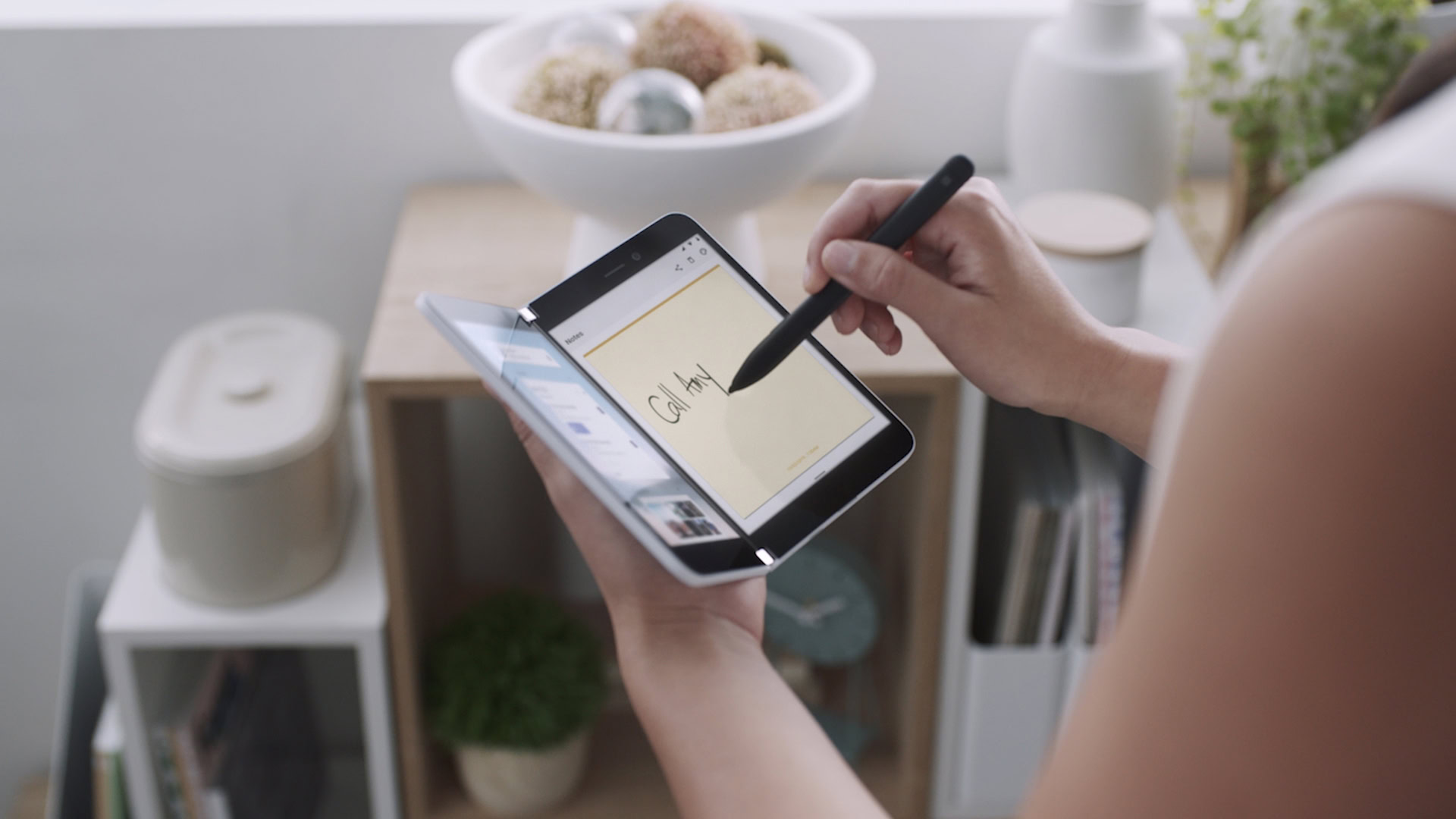Affiliate links on Android Authority may earn us a commission. Learn more.
This might be the future of dual-screen apps on Android
Published onJanuary 23, 2020

Microsoft surprised the tech world late last year when it revealed two dual-screen foldable devices. We saw a dual-screen Windows-powered foldable in the Surface Neo, but the Surface Duo made more headlines due to its Android trappings.
Now, Microsoft has announced a preview SDK for the Surface Duo, allowing developers to get an early look at making apps for the device. This SDK includes a Surface Duo emulator that simulates gestures, hinge angles, the seam between screens and more. But the Redmond company also gives us an idea of what to expect from dual-screen devices, following on from Android 10‘s support for foldables.
Microsoft detailed a few examples of dual-screen Surface experiences in the blog post, such as using both screens as one giant display, and a book-style experience (with a page on both screens). Check out the images below for all the examples.

The Redmond company is also urging developers to avoid designing apps specifically for one device, so these apps work on future dual-screen devices. Furthermore, it’s calling on developers to take all potential orientations and screen configurations into account — not just portrait for Android and landscape for Windows.

“For example, if your app is designed primarily for portrait orientation but supports a lot of text entry, users might be more likely to use it in landscape orientation on a dual-screen device, with the keyboard on the bottom screen,” Microsoft explains, while also calling on developers working on the likes of note-taking apps to optimize for landscape layouts.
Furthermore, Microsoft is encouraging developers to support drag-and-drop functionality between screens, multiple instances of the same app so each instance can show different content, and picture-in-picture media.
The Surface Duo and Neo both offer a gap or seam between the screens, and the Windows kingpin has a few pointers for developers here too. Some of these pointers include shifting UI elements to the side so they don’t cross the seam, and snapping menus to the seam itself for a more aesthetically pleasing look. We also get a look at ways to account for the seam in software, such as rendering or skipping the obscured bit of content.
Here’s a quick look at some of the (unfinished) navigation gestures that are part of the Surface Duo. This build is pretty buggy, but still interesting to see. pic.twitter.com/Jra1xVfZl2— Zac Bowden (@zacbowden) January 22, 2020
Finally, we get an early look at the Surface Duo experience on the emulator via Windows Central‘s Zac Bowden (see above). The journalist’s Twitter account shows off gestures, dragging and dropping, and the general look and feel of the experience.
Would you buy a Surface Duo or a phone with a single folding display? Give us your thoughts below!